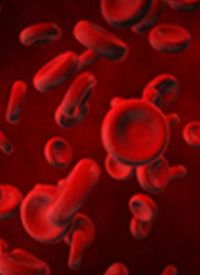Real-world OS Rates in aGVHD Increase in Ruxolitinib Treatment Era
Ruxolitinib induced clinically meaningful overall survival improvements by decreasing non-relapse mortality rates in patients with acute graft-vs-host-disease.

Ruxolitinib induced improved overall survival (OS) and decreased non-relapse mortality (NRM) rates vs prior standard therapies in patients with acute graft-vs-host-disease (aGVHD), according to findings from a single-center real-world study presented at the 2023 Transplantation and Cellular Therapy Meetings.1
The retrospective analysis looked at a total of 216 patients from a single-center who underwent allogeneic transplants between 2011 and 2022. A cohort of 107 patients transplanted between 2011 and 2015, labeled the before ruxolitinib era, were compared with 109 patients transplanted between 2016 and 2021, labeled the ruxolitinib era, in the analysis.
Prior to 2016, patients with steroid-refractory aGVHD were given thymoglobulin, high dose dexamethasone, etanercept, and/or extracorporeal photopheresis, whereas by 2016, this patient population was given ruxolitinib.
At the meeting, Jan Vydra, MD, transplant physician at the Institute of Hematology in Prague, Czech Republic, discussed how OS at 2 years after aGVHD treatment was 64% (95% CI, 57%-75%) in the ruxolitinib era compared with 53% (95% CI, 45%-64%) in the before ruxolitinib era (P = .04). Moreover, the incidence of relapse was similar between both groups at 25% in the 2011-2022 era and 26% in the 2016-2021 era (P = .27). However, NRM differed significantly between the before ruxolitinib era and ruxolitinib era at 31% vs 11% (P = .001), respectively.
The results of this single-center retrospective analysis echo results from the phase 2 REACH-1 study (NCT02953678) which showed durable efficacy results for patients with grade II-IV steroid-refractory aGVHD.2 The primary end point of overall response rate (ORR) was met in this trial, with the best ORR at any time for patients on ruxolitinib being 73.2% and 56.3% of those responses being a complete response.
These responses were seen in patients with aGVHD on their skin (61.1%), upper (45.5%) and lower (46.0%) gastrointestinal tract, and liver (26.7%), and their median duration of response (DOR) was 345 days. At the time of the REACH-1 analysis, the OS estimate at 6 months was 51%.
In a similar fashion, researchers looking at ruxolitinib given to 154 patients with glucocorticoid-refractory aGVHD in the REACH-2 phase 3 study (NCT02913261) saw a median OS of 11.1 months compared with 6.5 months in the control group (HR 0.83; 95% CI, 0.60-1.15).3 The primary end point in this study was ORR at day 28 of treatment with a key secondary end point of ORR at day 56, which favored the group on ruxolitinib in both cases.
On day 28, the ORR was 62% in the ruxolitinib group vs 39% in the control group (odds ratio [OR], 2.64; 95% CI, 1.65-4.22; P < .001). At day 56, the ORR was 40% vs 22%, respectively (OR 2.38; 95% CI, 1.43-3.94, P < .001). Moreover, researchers estimated that the loss of response at 6 months was 10% in the ruxolitinib group compared with 39% in the control group and saw that the median failure-free survival was longer for patients on ruxolitinib than with control at 5 months vs 1 month, respectively (HR 0.46; 95% CI, 0.35-0.60).
The single-center analysis did not address patients’ adverse events (AEs) with ruxolitinib, but in the phase 3 trial, the most common AEs were thrombocytopenia (33%), anemia (30%), and cytomegalovirus infection (26%).3 Treatment-emergent AEs in the phase 2 trial were similar and included anemia (64.8%), thrombocytopenia (62.0%), hypokalemia (49.3%), neutropenia (47.9%), and peripheral edema (45.1%).2
Characteristics among patients observed in the single-center analysis were mostly similar. However, patients in the 2016-2021 group more often experienced transplant from haploidentical donors at 38.5% of patients compared with 4.7% in the 2011-2015 group (P < .001). Thirty patients in the 2011-2015 era had matched sibling donors compared with 18 patients in the 2016-2021 group, mismatched unrelated donors were seen more in the 2011-2015 era, as well at 22 patients vs 17 patients in the 2016-2021 era, and 50 patients in the 2011-2015 era had matched unrelated donors compared with 32 in the 2016-2021 era.
A majority of patients in either the before ruxolitinib era and ruxolitinib era had grade 2 aGVHD at 71 patients vs 86 patients, respectively. This was followed by 31 vs 17 patients with grade 3 aGVHD, and 5 vs 6 patients with grade 4 aGVHD. The median age of patients was 48.8 years old in the 2011-2015 group and 46.1 years old in the 2016-2021 group with a slight majority of patients being male in both groups compared with female patients.
Most patients had a donor that was the same gender as them except for 23 patients in the before ruxolitinib era and 20 patients in the 2016-2021, which were male patients with a female donor. More patients in the ruxolitinib era also had an ABO match or minor mismatch at 47.7% and 31.2% of patients in that group, respectively, but there more patients in the before ruxolitinib era who had a major ABO mismatch than those in the ruxolitnib era at 27.1% vs 21.1%, respectively.
References
- Vydra J, Valkova V, Markova M, et al. Improved overall survival in patients with acute GvHD with ruxolitinib - a single center experience. 2023 Transplantation and Cellular Therapies Meeting. February 15-19, 2023. Orlando FL. Abstract 369
- Jagasia M, Perales MA, Schroeder MA, et al. Ruxolitinib for the treatment of steroid-refractory acute GVHD (REACH1): a multicenter, open-label phase 2 trial. Blood. 2020 May 14;135(20):1739-1749. doi:10.1182/blood.2020004823
- Zeiser R, von Bubnoff N, Butler J, et al; REACH2 Trial Group. Ruxolitinib for glucocorticoid-refractory acute graft-versus-host disease. N Engl J Med. 2020 May 7;382(19):1800-1810. doi:10.1056/NEJMoa1917635



